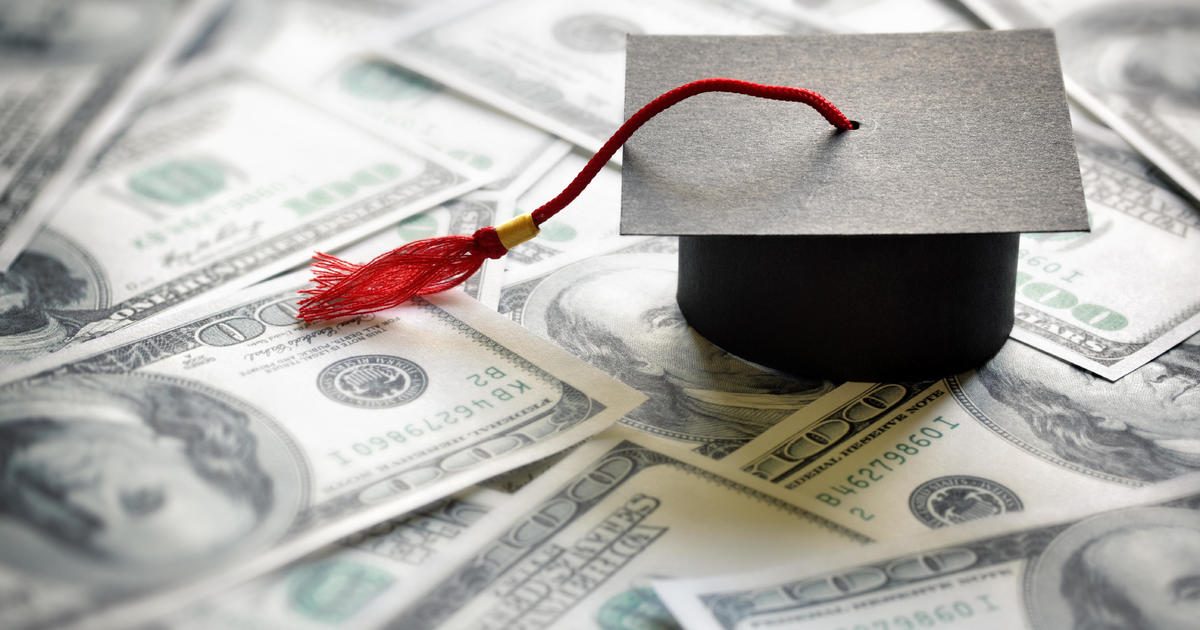Lauren Schreiber spent more than a decade earning a doctorate degree on the way to becoming a chiropractor. Now for the hard part: Repaying her $581,000 in student loans.
Schreiber, 32, may have to start paying off her loans within a matter of weeks now that a temporary pause in school debt payments granted by the Trump administration in September is set to expire December 31.
“My concern is that, with the amount of loans I have, the interest alone is $40,000 that accrues every single year,” said the Troy, Illinois, resident, who is looking for work, noting that she was paying $100 a month on her loans before Congress froze repayments in March for some loans. “So that $100 a month isn’t even touching the interest, and over time that’s going to keep accumulating.”
Schreiber incurred her heavy debt load by borrowing to fund her undergraduate and advanced degrees, as well as chiropractic college in Georgia. Over the years she was in school, interest on the loans further swelled her obligations.
Lauren Schreiber, 32, is a chiropractor from Troy, Illinois, who owes almost $600,000 in student loans. She worries she’ll have to move away from her family to earn more money to pay off her loans.
Courtesy of Lauren Schreiber
Congress still has time to extend the moratorium on repaying school debt into 2021, while the latest stimulus package being hashed out in Congress offers $4 billion in relief for student loan borrowers. On Friday, the Department of Education also ordered debt collectors to postpone sending bills until at least February.
But a longer-term legislative solution, which has escaped lawmakers for months, is not guaranteed. That means millions of Americans, including people who are out of work, could soon face have another financial headache.
A survey from advocacy group Student Debt Crisis found that many borrowers are worried about the impending payments. More than 75% of respondents said they won’t be in financial shape to resume payments until June of next year, and 65% said they face anxiety or depression from student loan debt.
Millions of Americans can’t afford another bill right now, said Ashley Harrington of the Center for Responsible Lending. That means many borrowers will face tough money decisions in the near future, like whether to pay their rent or pay their student loan.
“People are going to have to make decisions, and I think the hard part about it is that they’re having to make these decisions in an economic environment where everything else is so uncertain,” Harrington said.
A car “breakdown away from defaulting”
School loan payments are restarting at a time when nearly 11 million Americans remain unemployed and total student loan debt has reached a historic $1.7 trillion.
Alan Yeck of North Carolina said he will resume payments on his roughly $155,000 in student loans after he finds new employment. Yeck, 59, studied information technology as an undergraduate student at Wilberforce University, a historically Black university in Ohio. He earned his MBA online from Walden University.
Yeck had been paying $1,100 a month on his student loan until he was laid off from his job as an administrator at Elmira College in upstate New York in June. He estimates his loans will eat up roughly 15% of his take-home pay, making it hard to save money or even squirrel away funds for financial emergencies.
“Everyone is one car transmission breakdown away from defaulting,” he said.
Pelosi, McConnell nearing deal on stimulus
02:08
U.S. Education Secretary Betsy DeVos has opposed any broader move to forgive federal student loans, recently calling such proposals a “socialist takeover of higher education.” By contrast, President-elect Joe Biden has pushed for eliminating up to $10,000 in debt for each borrower.
Some critics of offering relief to college loan borrowers say erasing debt is misdirected, with research showing that would help higher-earning Americans far more than low-income borrowers. Eliminating all student debt would free up $192 billion for the nation’s top income earners, compared with $29 billion for borrowers on the lower end of the income scale, one study from the University of Chicago and University of Pennsylvania found.
Forgiving $10,000 would boost the nation’s gross domestic product by only 0.1% in 2021, Goldman Sachs economists estimate. Erasing $50,000 in debt for every borrower would boost GDP by 4%, according to the investment bank.
Still, Harrington believes forgiving debt would accelerate the fragile economic recovery. “People were struggling with student debt before the public health crisis and most people will continue to struggle for a while,” she said. “If we come out of this pandemic and still have $1.7 trillion in student loan debt, then we have just kicked a very large and very expensive can down the road.”
